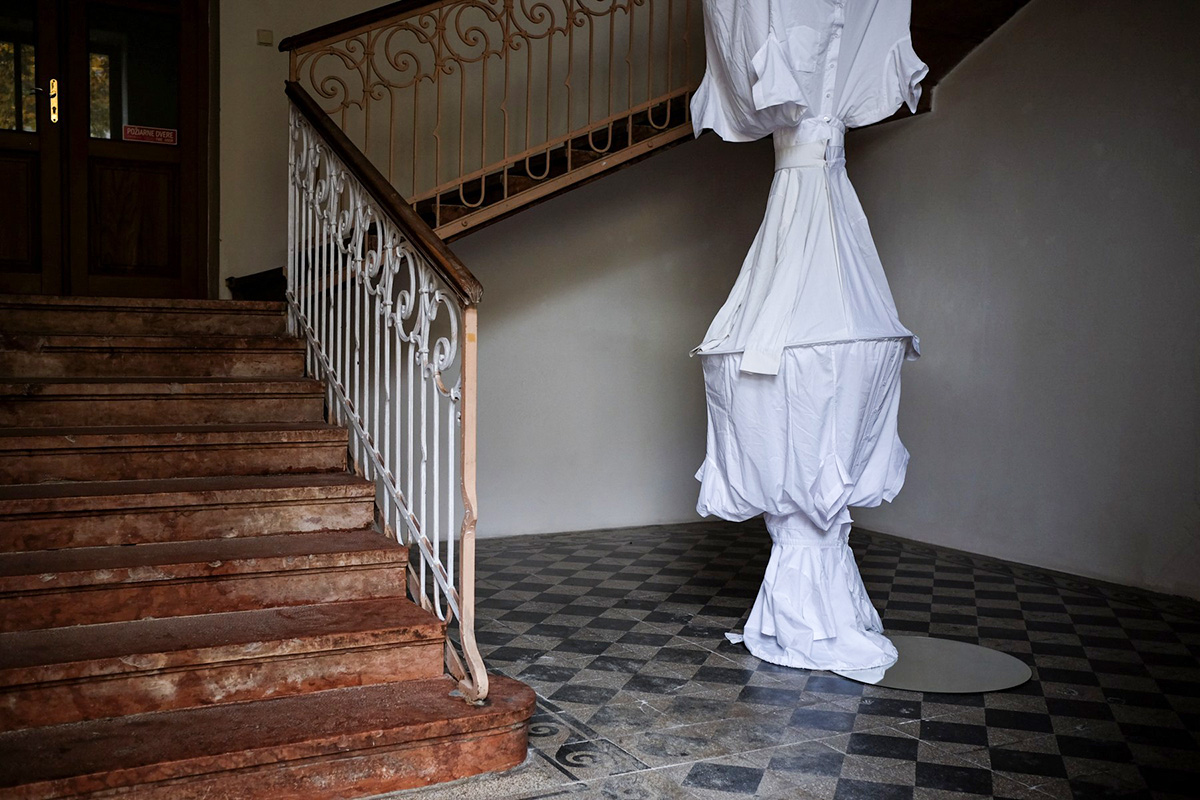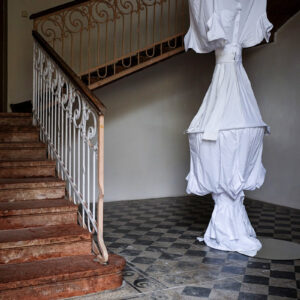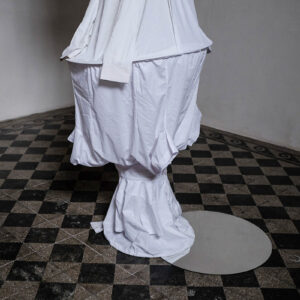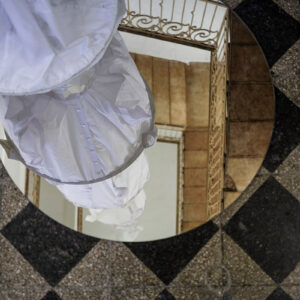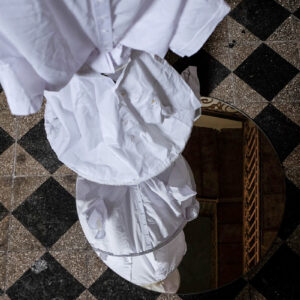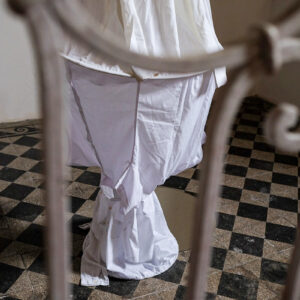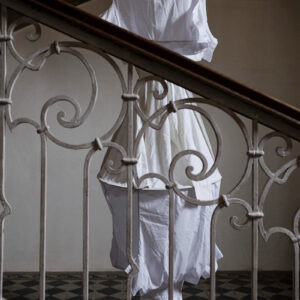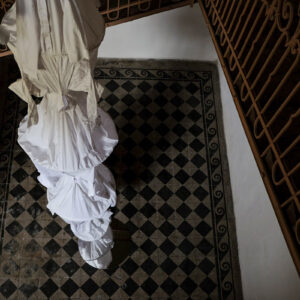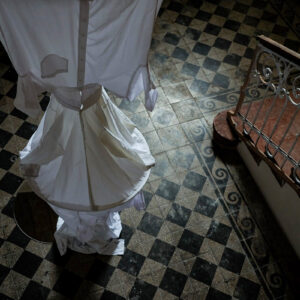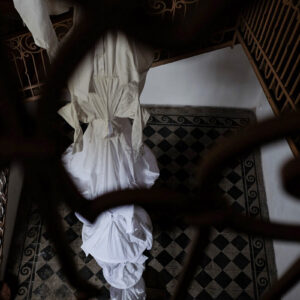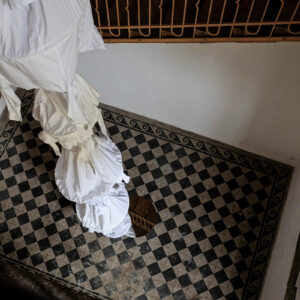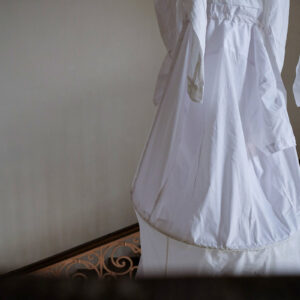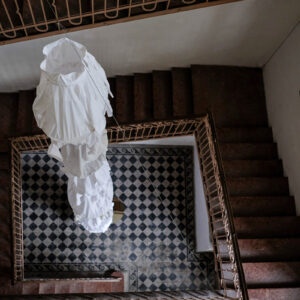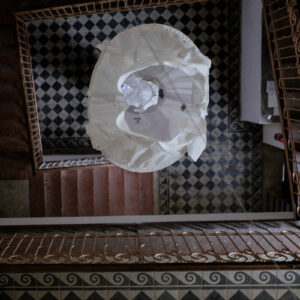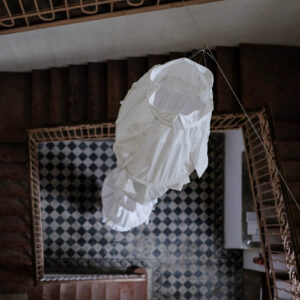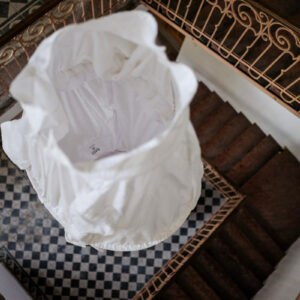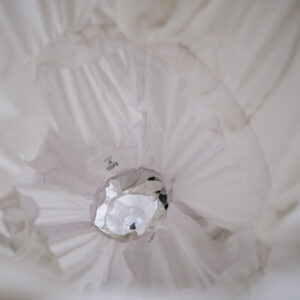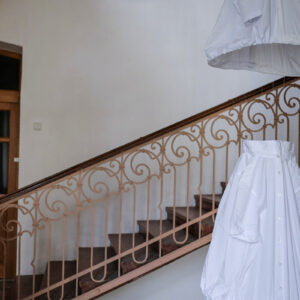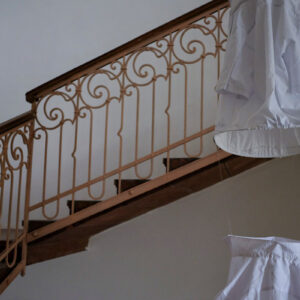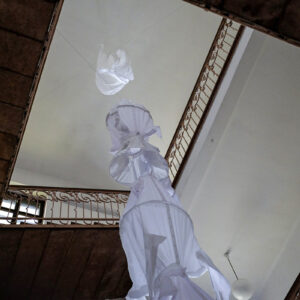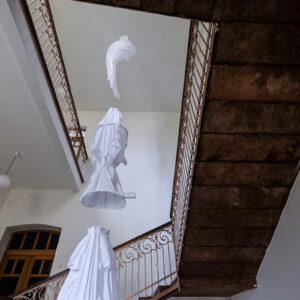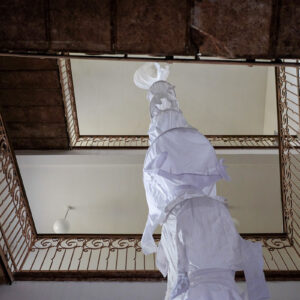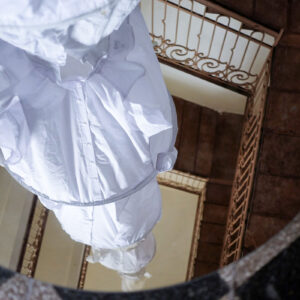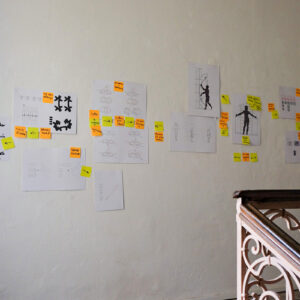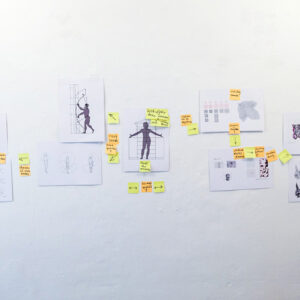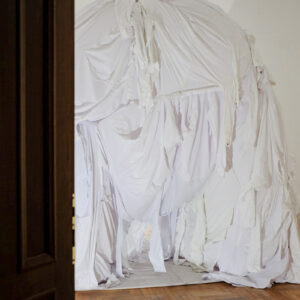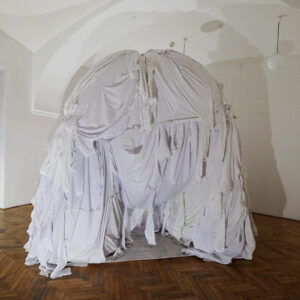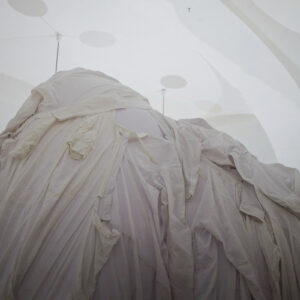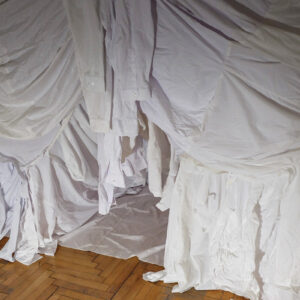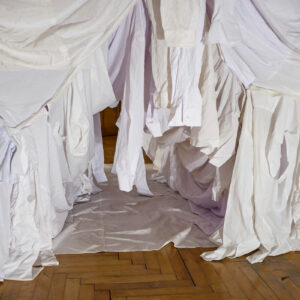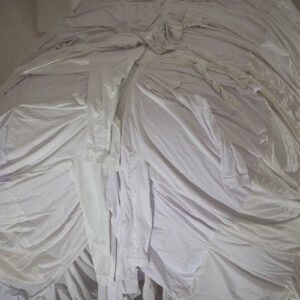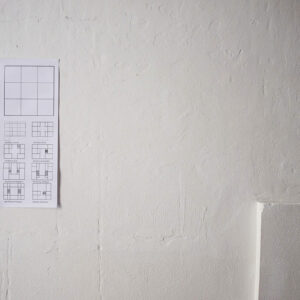Information
Artist
Danica Pišteková
Curator
Adrián Kobetič
Duration
October 22, 2020 – February28, 2021
Venue
Youth Gallery
Download
Funding
This project has been supported using public funds provided by Slovak Arts Council. The Council is the leading partner of the exhibition.
Human body can be very much like architecture. The skeleton and body mass represent its structural frame while the organs work as functional units – rooms, while the skin is its facade. Since the ancient times, scholars have been aware of a certain order inside the human body that set the tone not just for architecture, but also for the whole world. Man reflected the order of the universe and its scale. In architecture, the scale factor was not just functional, but also representative, harmonic, connecting the body and soul with the place where man lives. When we reduce the scale to a minimum, clothing can be perceived as architecture as well. It is usually adjusted to the body, personalises its appearance based on the owner’s style, protects them, covers them, but also represents them. Both cloths and architecture can be used for various purposes. They can highlight or hide, reduce or enlarge, cover or expose. Architectural and clothing demands keep changing over the course of history. What was popular a few years ago is no longer sought after. Our demand keeps rising which stimulates new design approaches.
Textile in architecture does not represent any material innovation. Even the oldest nomad tribes’ dwellings were made of textile so they could have been folded and packed as necessary. The wooden skeleton (frame) was covered with textile (coat) and they both could have been adjusted based on the interior space requirements. Nevertheless, even today, textile offers new use cases in architecture, just like architecture stimulates new trends in fashion. Clothes lend architecture their materials while architecture lends clothes its system.
Danica Pišteková is an architect whose work is based on the overlaps of clothing and architecture. From her perspective, clothes do not just serve their purpose, they create a new program or rather develop the program on the inside, just like architecture does. It can accumulate, shift, aggregate. Besides that, it can also turn the whole process around. The artist uses pre-existing, conventional parts of clothes as building modules to create new objects on the human body scale and with no cultural or social relevance. Inside these new “clothes”, using their formal language, she creates a multi-layer, sawn-up autonomous space which is independent of the body inside. At the same time, the space is soft and flexible, open and unstable – in fact, it is a source of endless exploration. Her SHIRT STRIH exhibition [translator’s note: “STRIH” means “CUT” in English] presented in the Youth Gallery makes use of the specific space of the staircase and the hall in order to create objects presenting the mentioned innovations. A central piece of clothing that gives the objects their module is the shirt. The viewer’s role is to explore the various techniques the artist has used to create the spatial objects (at the spaces themselves) and study the individual modules of clothes. The exhibition space allows the viewer to approach the objects from various angles and thus better understand the artistic concept.
Mgr. art. Danica Pišteková, ArtD. (born 23. 7. 1987 in Šaľa) studied fashion design at the School of Applied Arts in Trenčín and then architecture at the Academy of Fine Arts and Design in Bratislava where she also received her doctoral degree in 2017 under the leadership of Mag. Arch. Peter Stec, ArtD. and prof. PhDr. Marián Zervan, PhD. During her studies, she went on study trips to England (the Plymouth University) and Copenhagen (the Center for Information Technology and Architecture). At the moment, she works as an assistant lecturer at Ján Studený’s Studio III at the Department of Architecture at AFAD where she took research residencies at the University of Arts in Tokyo and the Gengdan Institute of University of Technology in Beijing. In 2018, she was a laureate of the NOVUM Foundation Award. She has also been nominated numerous times for the CE ZA AR Architecture Award and has recently received it in the People’s Choice category as a part of a team of four architects called WOVEN. She has participated at dozens of workshops, conferences and architecture competitions.
